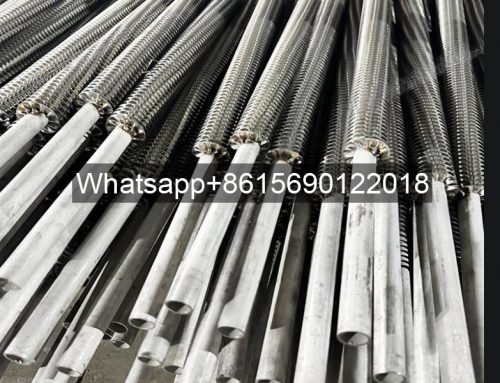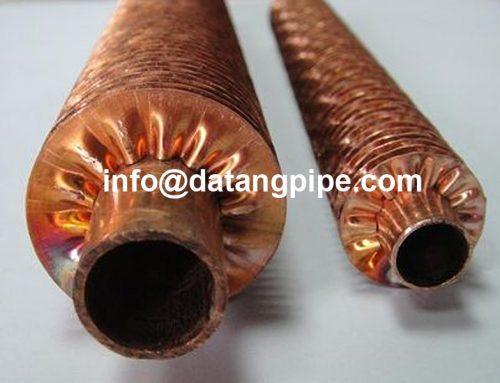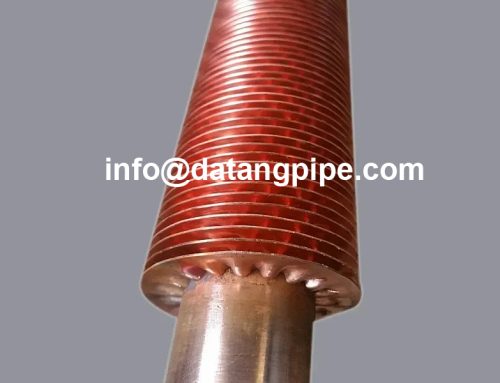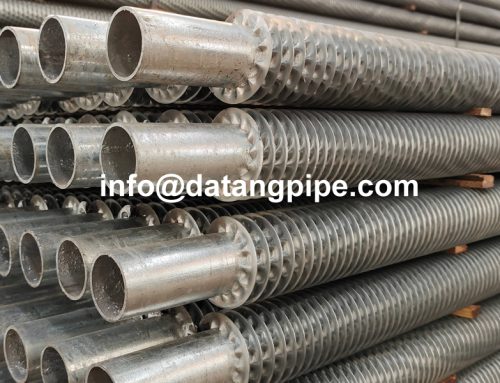Project Description

Product Name: Spiral Tension Wound Finned Tubes in the Petrochemical Industry
- Leave Your Message
Spiral tension wound finned tubes are widely used in the petrochemical industry due to their excellent heat transfer performance and compact design. Their unique design makes them important in a variety of processes, including heat exchange, cooling, and heating.
Base tubes can be made of carbon steel, stainless steel, or copper, depending on the characteristics of the medium. Fins can be made of aluminum, copper, or steel. Through a composite process, they achieve a combination of corrosion-resistant base tubes and efficient heat conduction from the fins.
For example, in seawater cooling systems, a combination of 316L stainless steel base tubes and copper fins resists seawater corrosion while maintaining a thermal conductivity of over 90W/(m·K). In high-temperature flue gas environments (300-400°C), the combination of carbon steel base tubes and aluminum-coated steel fins forms a protective film through the high-temperature oxidation of the aluminum, extending the service life by more than twice that of ordinary carbon steel finned tubes.
The performance advantages of spiral tension-wound finned tubes are fully amplified. In the cold box of a natural gas liquefaction plant, a spiral structure of copper base tubes and copper fins maintains stable heat transfer at temperatures as low as -162°C, and its continuous fins prevent brittle fracture at low temperatures.
In centralized heating systems in northern China, the carbon steel base tube and aluminum fin design, combined with an internal anti-corrosion coating, withstands oxygen corrosion from heating water. A single radiator unit achieves 50% higher heat dissipation than traditional cast iron radiators, while being 60% lighter and reducing building loads.
The manufacturing flexibility of spiral tension-wound finned tubes allows them to meet individual needs. By adjusting fin height (5-20mm), pitch (3-15mm), and winding angle (30-60°), specialized finned tubes can be manufactured to suit different media. For high-viscosity fluids (such as crude oil heating), a large pitch (10-15mm) design reduces flow resistance.
Compared to other finned tube types, spiral tension-wound finned tubes offer a more competitive overall cost-effectiveness. While initial manufacturing costs are 15-20% higher than tandem finned tubes, the overall lifecycle cost is 25-30% lower due to their extended lifespan (15-20 years) and reduced maintenance costs (annual maintenance costs are only one-third of those of tandem finned tubes).
In waste heat recovery projects, heat exchangers using these finned tubes can shorten the payback period to 1.5-2 years, significantly reducing the 3-4 years of traditional equipment.
I. Basic Structure and Principle of Spiral Tension Wound Finned Tubes
A spirally wound finned tube consists of an inner tube and outer spiral fins. The fins are typically wound around the inner tube at a specific angle. This structure not only increases the heat transfer area but also enhances the turbulence of the fluid within the tube, thereby improving heat exchange efficiency. As the fluid flows through the inner tube, heat is exchanged between the fins and the inner tube, creating a highly efficient heat exchange process.
II. Advantages of Spirally Wound Fin Tubes
Efficient Heat Exchange Performance
The design of spirally wound fin tubes provides a large heat transfer area and excellent flow characteristics, significantly improving heat exchange efficiency. The spiral structure effectively reduces flow resistance, especially when handling high-viscosity fluids.
Space Saving
Due to their compact design, spirally wound fin tubes occupy less space for the same heat transfer area, making them suitable for space-constrained processes.
High Adaptability
This type of fin tube can adapt to a variety of fluids and operating conditions, making it widely used in a variety of heat exchange requirements.
III. Specific Application Examples
In the petrochemical industry, spirally wound finned tubes are widely used in the following areas:
Spiral Wound Finned Tubes for Heat Exchangers
In the petroleum refining process, spirally wound finned tubes are often used in heat exchangers to recover waste heat and improve energy efficiency. For example, in atmospheric and vacuum distillation units, spirally wound finned tubes are used to heat crude oil, significantly improving heating efficiency.
Spiral Wound Finned Tubes for Cooling Systems
In cooling towers and cooling water systems, spirally wound finned tubes can effectively reduce fluid temperature and ensure safe equipment operation. Their efficient heat dissipation allows for faster cooling.
Spiral Wound Finned Tubes for Reactors
Temperature control is crucial during chemical reactions. Spiral wound finned tubes can provide uniform temperature distribution in reactors, ensuring smooth reaction progress.
IV. Operating Conditions and Performance
The application of spirally wound finned tubes in the petrochemical industry typically requires consideration of multiple operating conditions, including fluid temperature, pressure, and flow rate. Based on different process requirements, the appropriate fin spacing and tube diameter are designed to achieve optimal heat transfer. Fluid properties (such as viscosity and corrosivity) also influence the selection and design of finned tubes.
V. Maintenance and Care
While spirally wound finned tubes have demonstrated outstanding performance in the petrochemical industry, their maintenance and care are equally important. Regular inspection and cleaning of the finned tubes can effectively reduce scaling and improve heat transfer efficiency. For applications using highly corrosive fluids, finned tubes made of corrosion-resistant materials are recommended to ensure long-term, stable operation.
VI. Challenges and Solutions
In practical applications, spirally wound finned tubes also face challenges such as scaling, corrosion, and uneven flow. The industry is exploring various solutions to these challenges, such as:
Material Improvement
Using new corrosion-resistant materials improves tube durability and extends service life.
Fluid Modification
Adding additives to the fluid reduces scaling and corrosion.
Spiral wound finned tubes have significant application value in the petrochemical industry. Their efficient heat exchange performance, space-saving advantages, and excellent adaptability make them a top choice for many heat exchange equipment. In the future, with the development of materials science and intelligent technology, the application of spirally wound finned tubes will become more extensive, providing strong support for energy conservation, emission reduction and efficient production in the petrochemical industry.






